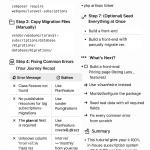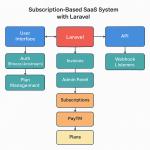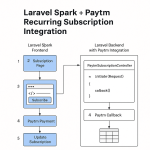Limited Time Offer!
For Less Than the Cost of a Starbucks Coffee, Access All DevOpsSchool Videos on YouTube Unlimitedly.
Master DevOps, SRE, DevSecOps Skills!

What is Container & Kubernetes Security?
Container and Kubernetes security focuses on securing containerized applications and the underlying Kubernetes orchestration platform. Containers introduce a new layer of complexity to the security landscape, requiring specific measures to mitigate risks. Kubernetes security involves securing the platform itself to prevent unauthorized access and malicious activity.
Container and Kubernetes security involves applying security practices to protect containerized applications and the Kubernetes orchestration environment from vulnerabilities and threats. This security is crucial due to the dynamic nature of container deployment and management. Kubernetes, as a container orchestrator, enhances the scalability and management of cloud-native applications but also introduces specific security challenges that need to be addressed throughout the container lifecycle—from build and deployment to runtime (The world’s open source leader) (CrowdStrike).
Here’s a breakdown of the key areas:
- Container Image Security: Ensuring container images are free from vulnerabilities, malware, and misconfigurations before deployment.
- Runtime Security: Protecting containerized applications while they are running on the host system. This includes techniques like network segmentation, workload isolation, and privilege controls.
- Kubernetes Security: Securing the Kubernetes cluster itself. This involves securing the control plane, API server, and worker nodes to prevent unauthorized access and privilege escalation.
- Secrets Management: Protecting sensitive data like passwords, API keys, and tokens used within containers and Kubernetes.
Advantages of Implementing Container & Kubernetes Security:
- Reduced Risk of Attacks: By addressing vulnerabilities and enforcing security best practices, container and Kubernetes security reduces the attack surface and makes it harder for malicious actors to exploit weaknesses.
- Enhanced Compliance: Strong container and Kubernetes security helps organizations comply with data privacy regulations and industry standards.
- Improved Application Security: Security measures built into the containerization process can improve the overall security of containerized applications.
- Faster Incident Response: A well-defined security posture enables faster detection and response to security incidents involving containers and Kubernetes.
- Reduced Downtime: Proactive security measures help prevent security incidents that could lead to application downtime and disruption.
Use Cases of Container & Kubernetes Security:
- Securing Microservices Architectures: Many modern applications are built using microservices architectures, often deployed in containers. Container and Kubernetes security is essential for protecting these distributed systems.
- Protecting Cloud-Native Applications: As cloud adoption grows, containerized applications are increasingly deployed in cloud environments. Container and Kubernetes security is crucial for securing these deployments.
- Ensuring Supply Chain Security: The container image supply chain can be a potential vulnerability. Container and Kubernetes security practices help mitigate risks associated with vulnerabilities in container images.
- Enforcing Security Policies: Organizations can define and enforce security policies for containerized applications and the Kubernetes platform to ensure consistent security practices.
- Monitoring for Threats: Continuous monitoring of container environments for suspicious activity is crucial for early detection and response to security threats.
List of Tools and Services for Container & Kubernetes Security (Including Open-Source Tools):
Commercial Tools:
- Aqua Security
- Sysdig Secure
- Qualys Container Security
- Palo Alto Networks Prisma Cloud
- Trend Micro Cloud One – Container Security
Open-Source Tools:
- Clair (container image vulnerability scanner)
- Trivy (vulnerability scanner for container images, Dockerfiles, and Kubernetes objects)
- Falco (runtime security for containers)
- AquaTrace (open-source version of Aqua Security’s container threat detection platform)
- Kubenet (network plugin for Kubernetes)

List of Tools and Services for Container & Kubernetes Security Including Open Source Tools
A variety of tools are available for enhancing the security of containers and Kubernetes environments:
- Kubescape: An open-source tool designed for Kubernetes, providing capabilities to detect misconfigurations, scan images for vulnerabilities, and automate compliance checks (ARMO).
- CrowdStrike Falcon: Offers comprehensive security solutions that include monitoring containers and securing them as they are deployed (CrowdStrike).
- Aqua Security: Provides a full lifecycle security platform for containers and Kubernetes, ensuring that applications are secure from the development to the runtime phase (ARMO).
- Sysdig: This tool focuses on secure DevOps workflows, offering deep visibility and security analytics for containers and Kubernetes (Cloud Native Now).




